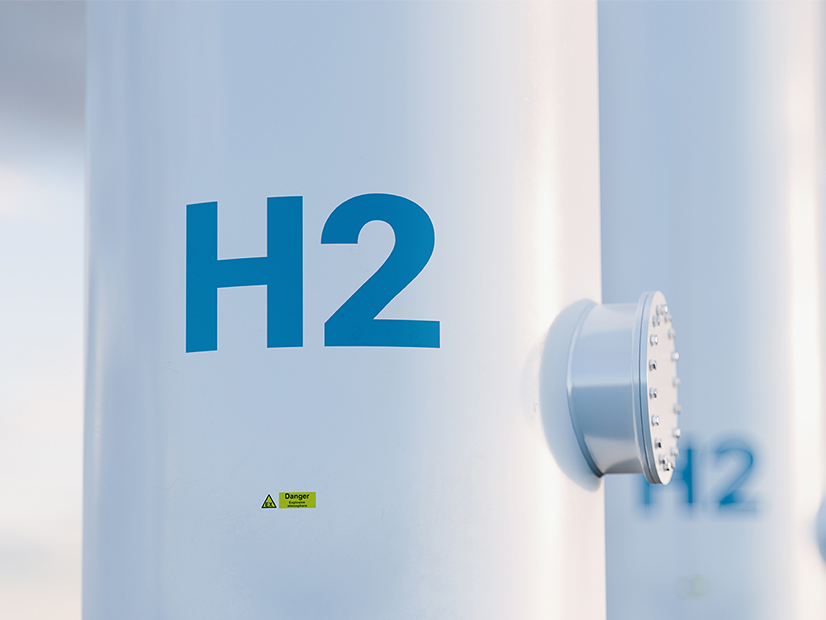The Department of Energy on Wednesday announced plans to use $1 billion from the Infrastructure Investment and Jobs Act to underwrite demand for the clean hydrogen to be produced by the regional hydrogen hubs (H2Hubs) funded with $7 billion from the law.
The goal of the proposed “demand-side support mechanism” will be to “ensure both producers and end users in the H2Hubs have the market certainty they need in the early years to unlock private investment and realize the full potential of clean hydrogen,” according to DOE’s press release.
A combined notice of intent (NOI) and request for information (RFI) also released Wednesday outlined several options for how the money might be used. For example, DOE might act as a “market maker,” buying clean hydrogen from the hubs and then selling it to offtakers. Other options might include:
-
- “Pay-for-difference” contracts that provide support to projects based on current market prices;
- A fixed level of support for projects ― for example, a fixed amount per kilogram ― added on top of other sources of revenue; and
- Funding to support feasibility studies undertaken by potential offtakers near the H2Hubs.
“Ensuring America is the global leader in the next generation of clean energy technologies requires all of us — government and industry — coming together to confront shared challenges, particularly lack of market certainty for clean hydrogen,” Energy Secretary Jennifer Granholm said in the press release. “That’s why DOE is setting up a new initiative to help our private sector partners address bottlenecks and other project impediments — helping industry unlock the full potential of this incredibly versatile energy resource and supporting the long-term success of the H2hubs.”
The RFI also asked for industry input on how hubs or companies might apply for the demand-support funds. The options here range from a reverse auction, with projects bidding in the lowest amount needed to make a project viable, to an “eligibility-based process,” in which all projects meeting certain threshold criteria would receive some form of support.
Another key question is whether an independent entity should administer the program.
Final applications for the regional H2Hubs were due April 7, and according to DOE’s Office of Clean Energy Demonstrations, which is overseeing the initiative, six to 10 hubs will be selected for funding by the end of the year. DOE will accept comments on the NOI-RFI through July 24 and expects to issue a “broad agency announcement” for the initiative by early fall.
A broad agency announcement is similar to a request for proposals but does not define a specific project. Rather, it poses a problem and invites proposals for different solutions.
Demand Lags Supply
President Joe Biden and DOE have framed clean hydrogen and the H2Hubs as essential for addressing hard-to-decarbonize industrial sectors, such as cement, steel and heavy-duty trucking.
The hydrogen hubs, to be located in diverse geographic regions across the country, are intended to kick-start the U.S. market, and the initiative drew a range of applications, some with two or more states partnering on a project. The Inflation Reduction Act backs up the hubs with a production tax credit of up to $3/kg for clean hydrogen, creating a strong draw for foreign investment as well.
So, with that level of support, why is further investment needed?
DOE’s Pathways to Commercial Liftoff Report for clean hydrogen, released this year, puts securing long-term offtake contracts at the top of its list of challenges to commercialization.
“At present, producers struggle to find credit-worthy offtakers with sufficient hydrogen demand sited within an affordable distance to hydrogen production who are willing to sign long-term contracts,” the report says. “Many offtakers with near-term break-even points are refineries and ammonia production facilities that can retrofit their existing facilities with carbon capture and sequestration rather than seek out a new clean hydrogen producer.”
Speaking at a recent event at the Bipartisan Policy Center in Washington, D.C., David Crane, DOE’s undersecretary for infrastructure, teased Wednesday’s announcement, saying that while the IRA did a good job of incentivizing supply, “the history of energy … is that demand formation always lags supply.” (See DOE Under Secretary: Industrial Decarb Should Happen This Decade.)
Building demand is a priority for the White House and DOE, he said.
The Liftoff report details other challenges for demand-building, such as the inability of offtakers to hedge any price volatility. Another concern for offtakers is that without a broad national supply chain, amounts of clean hydrogen may be insufficient or variable.
Crane sees the hubs as a first step to the buildout of both production and distribution facilities across the country that will support new applications for clean hydrogen and bolster offtaker and investor confidence.
As outlined in the RFI, the ultimate goal for the demand-support initiative is “the formation of a mature commodity market for clean hydrogen,” based on price transparency and standard, long-term contracts.


